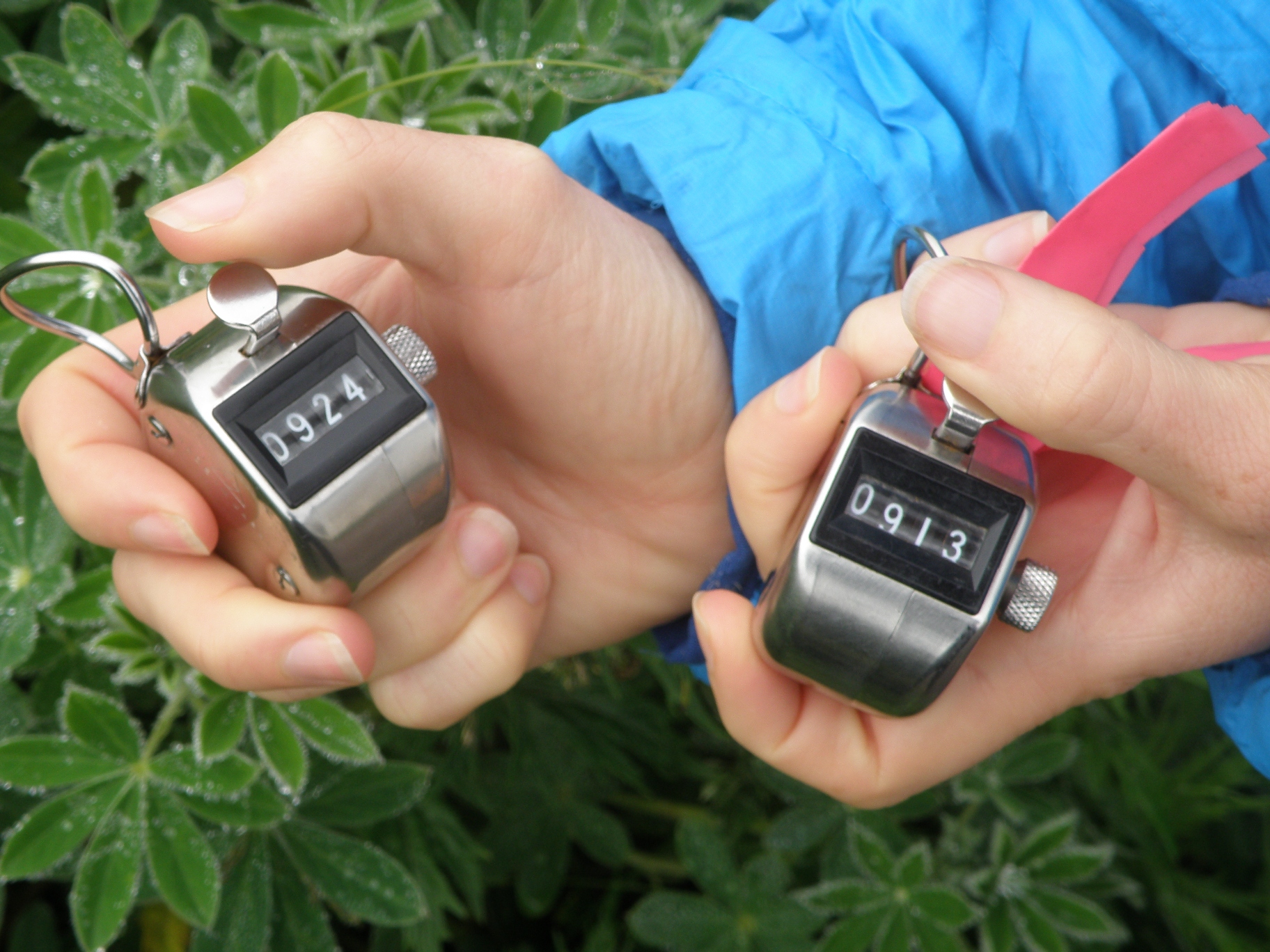2017 was a Population Count Year on the Pribilof Islands. McKenna Hanson, a Refuge biotech working on St. George Island, explains what this entails:
Click, click, click, click, click, click, click….. “Darn it, I lost count!”
For U.S. Fish & Wildlife (USFWS) seabird researchers in the Pribilof Islands, this year is busier than usual.
Most years that these biological technicians are visiting the islands for the summer, their most important tasks include staring at the towering cliff faces where the murres, kittiwakes, cormorants and fulmars come each year to raise their chicks. The technicians are attempting to keep track of how many chicks grow up and leave their nests at the end of the summer. This year, however, the technicians are given an additional task…. to count as many birds as they possibly can.
St. Paul and St. George Islands are incredibly special places for seabirds looking to breed in the Bering Sea. For example, Red-Legged Kittiwakes only breed in a few other places in the world but the colony on St. George Island is the biggest breeding colony! The high cliffs of the Pribilof Islands offer fantastic habitat for breeding seabirds, because they provide nice ledges where they can build nests out of predators’ reach. Researchers have estimated that over 2.8 million seabirds spend their summers raising their chicks in these awesome Bering Sea islands.
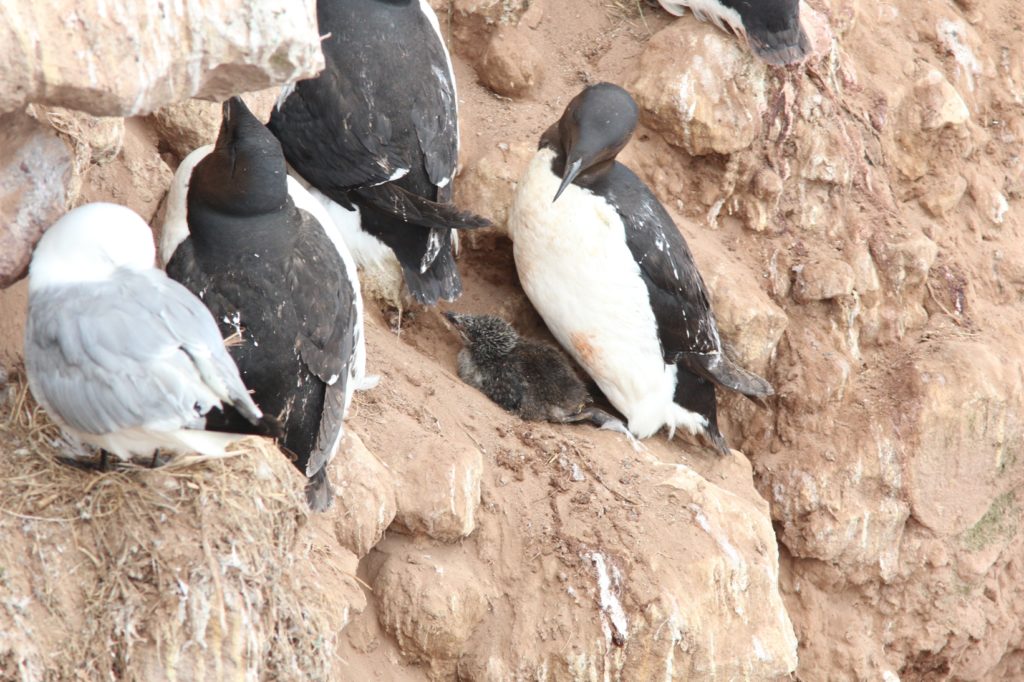
Thick-billed murre with chick
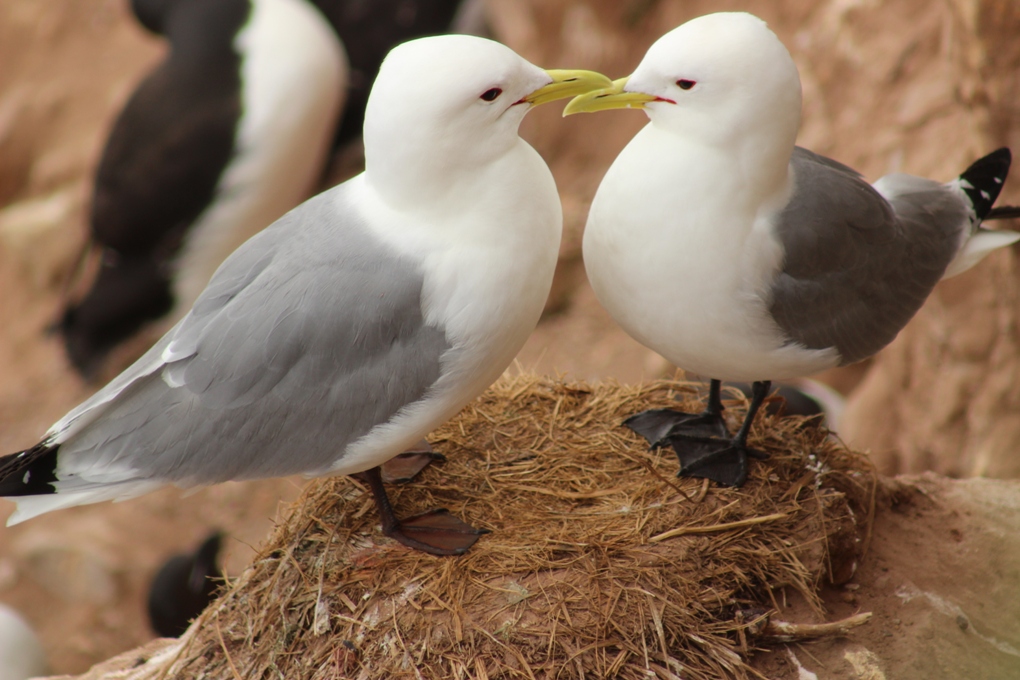
Black-legged kittiwakes on an empty nest
So, how do they know how many seabirds visit the islands each year? They count them! Every three years, USFWS brings extra workers to the islands with the sole purpose of counting murres, kittiwakes, cormorants, and fulmars as well as the nests of all these species! Now, it isn’t exactly how it sounds, you won’t see crazy technicians running around the island trying to count every single seabird they see. Instead, the crews go out to sites specifically set aside for counting birds that represent several zones of each island. Some of these sites are small, while others are HUGE….Over 1,000 murres have been counted in a single plot! Because it isn’t possible to get to every cliff face on the islands and count each bird, the technicians on St. George visit 54 counting sites, while the crew on St. Paul visits 24 sites. By counting the birds and nests in each site, USFWS biologists are able to calculate an estimate of how many birds are on the island that summer.
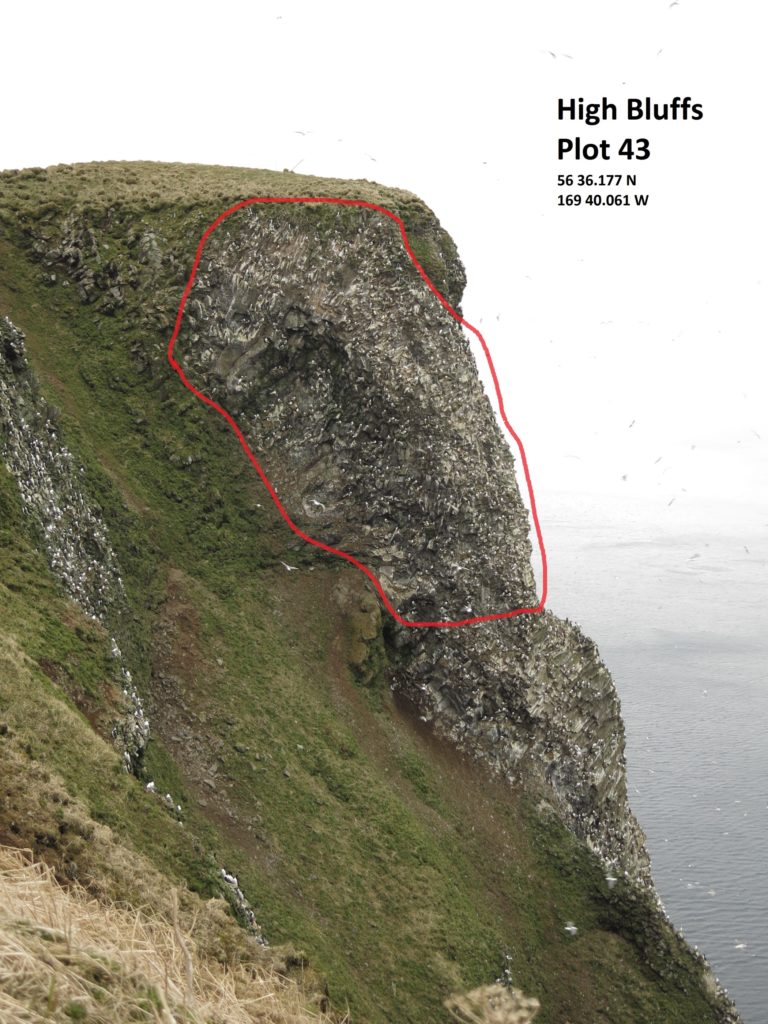
Plots are outlined on photographs, so they are easy to find and keep consistent among years
So what is it like to trying to count so many birds? Often times, the plots are pretty easy to count, though the big ones are challenging. For the big sites, technicians often have a map of the plot that shows them where to count birds, and then piece by piece they will count using binoculars or a telescope and a hand counter (the technicians call it a tally-whack or a ticker!). One of the things that make this the most challenging is when there are many, many birds sitting on a ledge, sometimes it is really hard to tell what you have already counted. The technicians have to pay close attention! Usually over the span of a month, the crews will count each site at least 3 or four times, so that the biologists can best calculate how many birds may really visit the island each summer. It is a ton of work!
So why do biologists and technicians do this job? Why do we want to know how many birds come to the islands? By understanding how many birds of each species normally come to the islands and how many have nests, it helps researchers see changes in the bird populations. Birds are awesome at being “indicator species” for the health of the Bering Sea. This means that when there are changes in the Bering Sea ecosystem, the seabirds can show us that through their populations. If the technicians are counting more or fewer seabirds and nests, that can clue scientists into bigger changes in the marine ecosystem! Birds bring incredibly important information through their activities, and are so exciting to study as well!
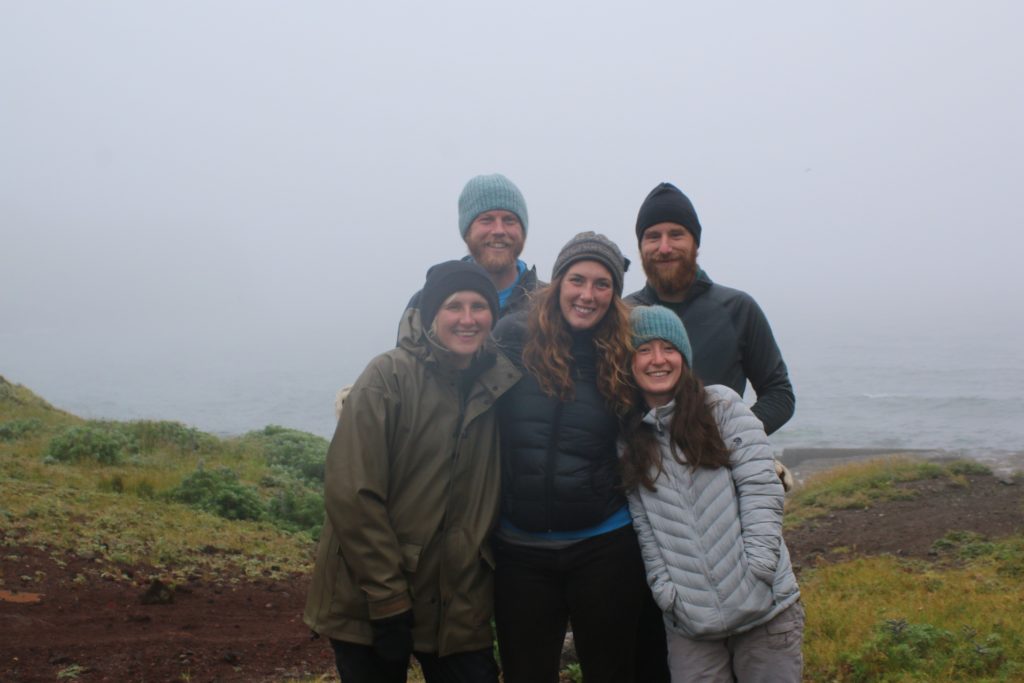
The 2017 field-team on St. George Island. The heavy fog made this year’s counts especially challenging.
By the end of this season, the technicians and biologists alike may be hearing the click of the tickers in their sleep or having nightmares of losing count and having to start over, but will surely feel great satisfaction when looking at their data at the end of the summer Getting to contribute to the collection of important scientific data is exciting and fulfilling work, and helps us understand how best to protect bird species and their habitats. These technicians have probably had enough counting for now, at least until the next population counts in summer 2020!

